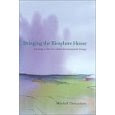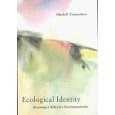I just returned (two weeks ago) from the Association of Governing Boards (AGB) Conference for College Presidents and Board Trustees. This concludes my annual trek to three higher education conferences. The others are the Council of Independent Colleges (CIC) President’s Conference and the New England Association of Colleges and Universities (NEASC) annual conference.
Here’s what I’ve gleaned from all three conferences. There is virtual unanimity around the following trends:
- A college education is becoming increasingly unaffordable.
- There is an alarming class stratification defining those who have the means to attend college (the lower and middle classes are increasingly left out).
- There is increased scrutiny of the value of higher education, what is called accountability.
- Competition to attract students will become increasingly stiff (especially in the Northeast) as the post-boomer generation declines.
- The fiscal crisis of the state (less support from the government) coupled with the unsettling economic times will dictate an era of diminishing fiscal support.
The conventional response is that all colleges have to develop strategic and innovative business models, define their marketing niches, implement lean and mean cost accounting procedures (especially as applied to academic programs), carefully tune their enrollment management strategies, reward entrepreneurial staff and faculty, search for alternative sources of revenue, and aggressively cultivate philanthropic support. In other words, implement a first-rate business plan!
All of this makes sense. I am deeply worried about the accessibility and affordability of higher education. And I’m sure that much of the advice regarding strategic leadership and innovative management is absolutely correct. Surely we are moving in this direction at Unity College. And so is every other institution that attends these meetings! At least we aspire to do so.
One of the big questions here, and perhaps the most riveting one for Unity College is: Who Gets to Go to College? Applied more directly to our mission and purpose: Environmental Studies for Whom?
One third of the students at Unity College are what are known as first-generation college students. That means they are the first people in their families to attend college. These are exactly the young people who are most underserved by higher education in America. They are the ones at highest risk for being left out of college access and affordability. Further, many of these students come from families who have historically earned their living by working the land, often in natural resource industries. In many of the states we serve, these industries are in decline, or making the transition to a tourist-based economy, or hopefully restructuring towards a sustainable approach to these industries.
Here’s our dilemma (and it’s faced by all colleges that serve first generation students). If we provide too much financial aid, we can’t generate enough revenue to operate. If we don’t provide enough, these students will be unable to afford college. Increasingly this challenge faces any middle-income student (first generation or not) who wishes to attend college.
At Unity College, we believe that it’s crucial to train a new generation of students who will be the pioneers of the new sustainability industries. We hope that hundreds of thousands of young people will go to college (at Unity and elsewhere) not only so they have the opportunity to earn a good living and lead fulfilling lives, but so we they are equipped to lead America to a sustainable future.
Fred Krupp and Miriam Horn of the Environmental Defense Fund address the urgency of the new sustainability industries in their book Earth: The Sequel:
“A revolution is on the horizon: a wholesale transformation of the world economy and the way people live. The revolution will depend on industrial technology—capital intensive, shovel-in-the-ground industries—and will almost certainly create the great fortunes of the twenty-first century. But this new industrial revolution holds a more important promise: securing the world against the dangers of global warming. It is developing amid the poltical, economic, and technological equivalence of the perfect storm: worldwide concern about the enormous threat of greenhouse gases, growing realization that we are prisoners of petroleum—hostage to the unstable, sometimes hostile, regimes that control the supplies of crude and natural gas—and, finally, huge and accelerating advances in technology that make possible unprecedented breakthroughs in how we make and use energy.”
Here are three converging trends: the growing inaccessibility of higher education, the promise of a new “sustainable” industrial revolution, and the threat of global warming. If we link the “crisis” in higher education to this bigger challenge (future ecology and economy of the planet), we can begin to craft solutions.
America’s colleges and universities should be retooled so that they can provide maximum opportunity for students of all income levels, especially if they want to be trained for the new sustainable industries. We can reconstruct our economy by seeding these industries with an entire generation of young people who are looking for a cause. And we can’t expect colleges and universities to do it on their own. They need strong support from businesses and government. They need strong support from the voting public. If we train students to earn fulfilling livings by engaging them in an innovative, sustainable economy, most colleges will address the issue of accountability—they will make their institutions relevant and vital!
When I ask Environmental Studies for Whom I mean to suggest that environmental studies should be taught to everybody. As David Orr, Gus Speth, Michael Crow, Mary Evelyn Tucker, Tony Cortese, and countless others suggest: our crisis of education is a crisis of environment and our crisis of environment is a crisis of values.
This is the mentality that should inform how our colleges do business. It will certainly be the basis for how Unity College navigates its path to the future and who it chooses to serve.
Monday, April 28, 2008
Sunday, April 6, 2008
The End of the Earth (and its Renewal)


"You don't inherit place. You commit to it. You take its meanings upon yourself: its history, its rhythms, its defining character. When you make a place a home—an affectionately regarded range of ground from which you take identity (literally your home ground)—you are taking upon yourself an active duty of care."
Pete Hay
Dig deeper, however, and you realize, the extent to which Tasmania is a contested landscape. It's ecological and cultural heritage is fragile and threatened. It contains the dark shadow of an outrageous Aboriginal genocide, a controversial colonization—ecological imperialism, agricultural domestication, incarceration—and more recently fierce political disagreements as to how the landscape should be managed (wilderness protection versus industrial forestry).
The tentative compromise (historically speaking) is that southwest Tasmania is a world heritage area. But many of the remaining wilderness areas are unprotected and scheduled for logging and/or mining. A stunning new book of photography, Endangered Tasmania, presents luscious spreads of these landscapes, with liner notes explaining when they are scheduled for desecration. Given the "industrial" form of so much of Tasmania's natural resource extraction history, these "endangered" landscapes are truly at risk. It also seems to me, as an outsider, that Tasmania has yet to find a middle ground, a long-term plan for sustainable ecological land use, which would feature selective cutting, alternative energy, biodiversity protection, and economic opportunity.
Pete Hay, a political theorist/poet/essayist/place-based activist, addresses these challenges in a riveting and provocative series of essays (Vandiemonian Essays), which brilliantly reconstruct the history of the island (which he prefers to call Van Diemen's Land), striving to form an ecological identity, grounded in the ecological and cultural reality of the island.
This place, call it what you will, with it's compelling beauty, contested history, and remarkable ecology, isn't really "the end of the earth" as much as it is a living laboratory for the future of life on earth. Tasmania's future is no different than anyplace else. It's legacy and ancestry are inextricably linked, and a reconstructed history, one that is truly multicultural and ecological, will allow its inhabitants to live in place as they define it. Pete Hay describes his work as subversive because he (and his colleagues and fellow activists) are trying to reconceptualize the future of the island so that it fully embodies it's ecological and cultural heritage and potential.
What happens is Tasmania matters for the entire planet. When Pete asked Jake what brought him to the end of the earth, perhaps he was also thinking that this place is where the earth (and his own future) is renewed, fully understanding all of the struggles such renewal implies.
Tuesday, April 1, 2008
A Visit to Tasmania (Part One)

I was having dinner with Pete Hay, a wonderful Tasmanian writer and professor along with my son Jake who is studying photography at the University of Tasmania. Pete asked Jake why he was attracted to visit the "end of the earth." Jake remarked that Tasmania looked so compelling on his map of the world and then explained that when he arrived in Hobart, the air was so clear that he felt like he was viewing the world through binoculars.
Have a look at a map of the world and check out Tasmania. Notice its longitude. There is no other land at that longitude with the exception of a thin slice of Southern Chile. The "roaring forties" sweep through Tasmania, battering its Western edge with winds and rain. The rugged southwest is roadless and impenetrable rain forest. Many sections receive considerably more than one hundred inches of rain a year. However, the Eastern edge is in a rainshadow, receiving only twenty inches of rain. Hobart, the capital city, has a wonderful climate, and the Eastern shore is downright balmy.

Tasmania is a naturalist's dream. As part of a land mass that originally included Australia and New Zealand, its flora and fauna are relics of ancient Gondwanaland. For a North American, you've got a complex assortment of plant assemblages and species, most of which you've never previously encountered. The mammals are marsupials and monotremes and primarily nocturnal. And after you've seen a few of the cosmopolitan bird species (egrets and
cormorants), you're on your own. Further, Tasmania has been separated from mainland Australia for almost ten thousand years so their are unique microhabitat adaptations. As Tasmania is the most mountainous island in the world, their are dozens of topographical, climatic, and substrate variations, resulting in an intriguing biogeography.
Yet Tasmania is a fiercely contested landscape. The "wild and rugged" southwest is a world heritage area. But there is an ongoing and historical controversy regarding natural resource extraction, polluted landscapes, and misplaced dams. Much of Tasmania's landscape is currently threatened. Hence it is a compelling and vivid case study for the future of biodiversity, sustainability, and dwelling in place.
Subscribe to:
Posts (Atom)



